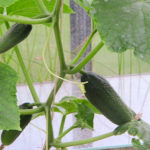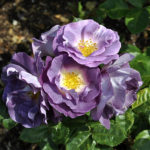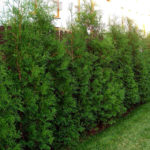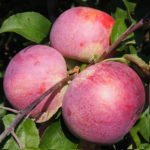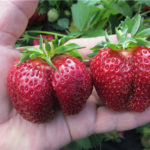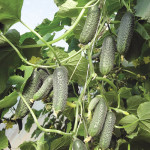Thuja occidentalis Woodwardy
Varieties of thuja, resembling a ball in shape, every year more and more win the love of landscape designers. For example, in Europe today, the Woodwardi variety (Thuja occidentalis Woodwardii). It is appreciated for its decorative qualities, excellent endurance and unpretentiousness.
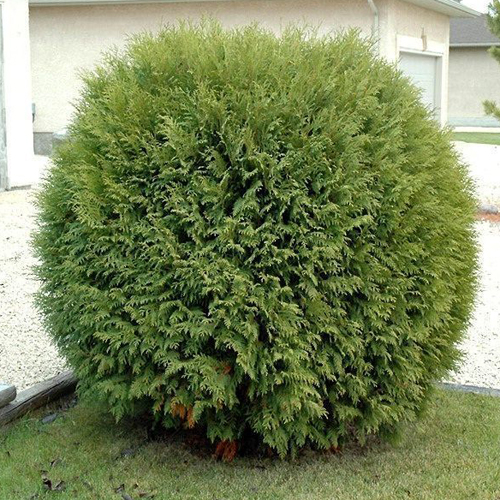
Description of the variety
This variety of western thuja was introduced into the culture at the beginning of the last century. The distinctive features of this shrub are compactness, crown density and small annual growth. The initially spherical shape of a coniferous plant, as it grows, turns into a rounded or domed one. This is due to the expansion of the crown. Having celebrated its 10th anniversary, the evergreen beauty grows up to 1.5 meters in height. The diameter of the crown of the ephedra at the indicated age is exactly the same. The final dimensions of the plant: height - 200, maximum 250 cm; width - about 3 meters.
The shoots of the shrub are straight, flattened and very dense. They are covered with needles, consisting of dark green scales with a characteristic shine, pleasing the eye with a golden hue in spring, and turning brown in winter. In due time, fruits appear on the plant: small brown cones of an oblong shape, collected in panicles.
Thuja has a relative shade tolerance, high winter hardiness (without shelter, it is not damaged by frosts down to -40 ° C) and an average resistance to diseases. However, Woodwardy is very vulnerable to sunburn, which is incredibly likely to get sunburn during winter and early spring. The plant is tolerant of polluted city air, because, due to its natural characteristics, it effectively cleans the atmosphere of various kinds of harmful impurities.
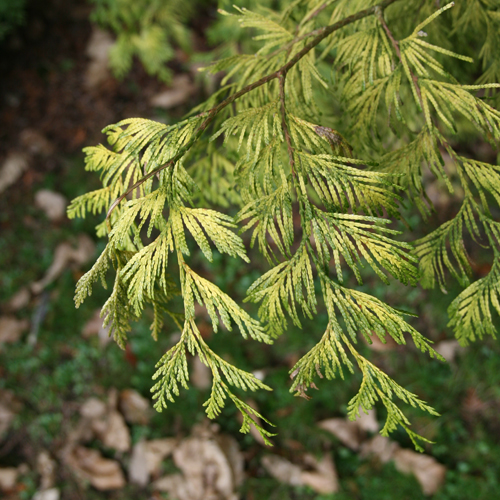
Growing and care
For planting ephedra, areas are chosen that are flooded with sunlight for most of the day or are in partial shade. When placed in shady corners of the garden, the decorative form of the ephedra becomes less pronounced, and the needles lose their natural shine and density. Low-growing thuja does not like cold winds, so the plant must be reliably protected from them.
The best soil option for this variety is moist, fertile, slightly acidic, loose soil. Recommended potting mix: 2 parts leafy soil. 1 part peat and the same amount of sand. About 500 grams of nitroammophoska is also required to be added to the planting pit. But first, do not forget to put a layer of drainage material 15-20 cm thick on the bottom of the hole in order to avoid stagnation of moisture in the soil. To increase the nutritional value of the substrate used for planting thuja, it is enriched with compost and humus. The depth of the hole should be between 60 and 80 cm. Make sure that the Woodwardy root collar is at ground level as a result of your planting work.
Coniferous plants are watered once a week. The consumption of settled water at room temperature for an adult culture is 1 bucket. After the soil under the ephedra has been moistened, the area of the near-trunk circle is covered with mulch: straw or peat. Twice a month it will not hurt to loosen the ground around the evergreen shrub. In addition to watering, the variety needs such a procedure as sprinkling the crown. To do this, use soft, not cold water. The event is held regularly, in the hot season - as often as possible. The most suitable time of day for him: morning or evening. A young plant should be fed periodically. Fertilization is carried out under the bush in the spring, using any mineral complex. An adult thuja does not need feeding.
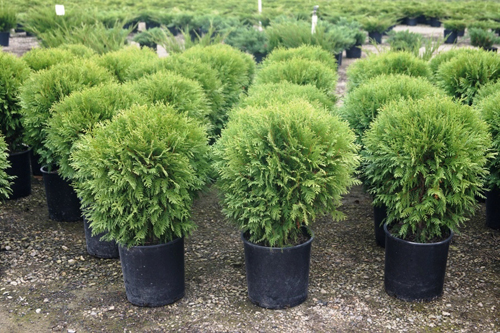
But pruning is recommended regardless of the age of the evergreen culture. It happens:
- sanitary - remove diseased, dry, damaged and improperly growing shoots;
- molding - produced in order to give the crown of the plant the desired or preserve its natural spherical shape;
- anti-aging - revitalizes the shrub, prevents the twigs from drying out.
In the fall, Woodwardy is insulated with a special covering material or spruce branches, after having tied the shoots to protect them from damage due to snow heaps. Culture is saved from sunburn by using burlap as a heater.
Since the immunity of the spherical thuja is not too high, it should be examined more often in order to identify the first signs of fungal diseases. They can be a change in the color of needles, decay of roots, drying out or softening of the lower part of the crop. The most common disease of the ephedra of this variety is brown mold, which occurs on the plant in early spring. In this case, spraying of the shoots with a solution of "Fundazol" will be a preventive and curative measure. Of the pests, there is a high probability of the appearance on the bush of thuja false shield and aphids, spider mites, moth moths, leaf rollers. A measure of their control is the treatment of plant branches with such drugs as "Fufanon", "Karbofos", "Actellik".
Use cases
The variety is used for landscaping parks, squares, gardens, children's playgrounds. It is also appropriate in a flower garden, because due to its compact size, this plant can be combined with various decorative flowering annuals and perennials. Successful companions for our heroine are juniper, spirea, jasmine, veronica, muscari, lupine, daisies, pansies, cuffs, marigolds, crocuses, tulips, roses, clematis, snowdrops, astilba, petunias, hydrangea, rhododendron, lilacs, lilacs , hosts, primrose, woodland. Thuja is also included in tree-shrub, coniferous compositions, mixborders. The evergreen beauty can be seen in the Japanese garden. Landscape designers use representatives of this variety to decorate hedges, alleys; divide the garden into zones, plant coniferous "balls" on the sides of garden paths and along the borders of the personal plot. An ornamental plant fits perfectly into the design of a heather and rocky garden, looks great on an alpine slide. Delightful landscape compositions are obtained, consisting of spherical beauty and decorative leafy crops. The ephedra is suitable for placement in group and single plantings against the backdrop of an emerald green, neatly trimmed grass lawn. This valuable variety is actively used as a container plant used for landscaping balconies, terraces, loggias, roofs of houses, areas near and in front of gazebos, garden stairs. Ideally, Woodwardy is placed near an artificial reservoir, as he prefers high humidity.
